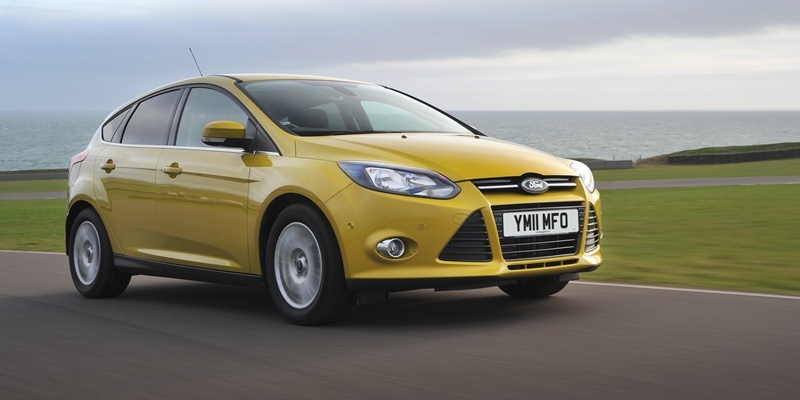The 2011 Focus is the most important car Ford have launched for quite some time.
It’s a global model, meaning we get exactly the same car as the rest of the world apart from it being right-hand drive of course. This has allowed Ford to pack it with technology normally seen on high-end Audis and BMWs, and thanks to their huge purchasing power make it all quite reasonably priced.
The one thing they haven’t tinkered with too much is the car’s looks. It’s sharper, but still recognisable as a Focus.
Ownership starts at £15,995 for the 1.6 litre petrol in Edge trim (the facts below are for this model). That’s kind of pricey, but represents only a couple of hundred pounds of an increase over the outgoing car, and Ford are known for offering good discounts to buyers who haggle.
All models come with air conditioning, electric front windows, remote locking, ESP, front, side and curtain airbags, Bluetooth, voice control and USB connection, and digital radio/CD player.
Zetec versions, which Ford reckon will account for 55% of UK sales, add 16-inch alloys, Ford’s excellent Quickclear heated windscreen, front fog lamps, leather steering wheel, front and rear power sockets, and heated door mirrors.
Titanium versions add start-stop button, Sony stereo, cruise control, tyre deflation detector, automatic headlights and wipers, LED interior lighting, dual zone climate control, and hill start assist.
Top-spec Titanium X models add front and rear parking sensors, 17-inch alloys, partial leather trim, heated front seat and electric driver’s seat, Xenon headlights, and electrically folding door mirrors.
Where the Focus really comes into its own is the amount of technology you can spec it with. There’s ‘active city stop’ technology, which automatically applies the brakes to prevent or mitigate low-speed accidents if the driver doesn’t react.
You can even upgrade your Focus to read road signs. A camera tells you when you’re entering and exiting different speed limit zones which, although a feat anyone with eyesight can accomplish, does come in handy when you’re on unfamiliar territory and have a lot to concentrate on.
The Focus’ most impressive party piece is the ability to steer itself. If the car detects itself veering off course if you’re not indicating, not actively turning the wheel or bouncing over lane markings it physically turns the steering wheel or applies braking to one side of the car to bring you back on course. Used in conjunction with adaptive cruise control, which maintains a steady distance from the car in front, the car can basically drive itself.
Sneakily or, rather, sensibly Ford have set the lane aid not to work unless both of your hands are on the wheel, a decision taken to prevent the driver from kicking back and reading a novel while the car gets on with the business of driving. On a similar theme, there’s also ‘active park assist’ which enables the car to parallel park without any steering input from the driver.
Over the years, motoring journalists have almost come to expect that a new Ford will be the best driving model in its class. So it almost comes as no surprise that the new Focus is a delight to drive. Its ride is Audi A4-supple, and it’s a delight to chuck around a few bends. There’s plenty of grip, the body remains flat during cornering, and it reacts to sudden steering inputs and changes of direction with great poise. It’s very quiet inside and will make a great motorway cruiser.
Engine-wise, buyers can choose from 1.6 and 2.0 litre turbodiesel units, with 95, 115, 140 or 160hp, or 1.6 litre petrol/turbo petrols with 105, 125 or 150hp. Even the least frugal of these returns 47.1mpg, while the 1.6 litre TDCi gets 67.3mpg and emits 109g/km of CO2.
When it first came out in 1998, the Focus blew away the opposition. Over the years, other car makers have steadily closed the gap until the Focus was merely neck and neck with its competitors.
This version puts it back out in front.
Price: £15,995.0-62mph: 12.3sec.Top speed: 116mph. Economy: 47.9mpg. CO2 emissions: 136g/km.
